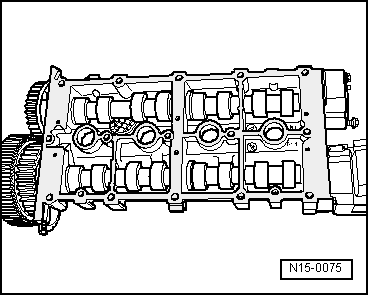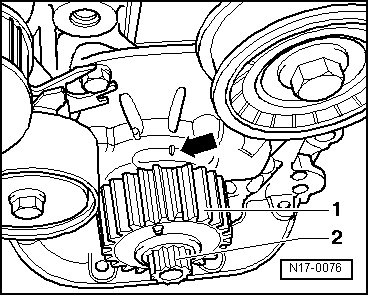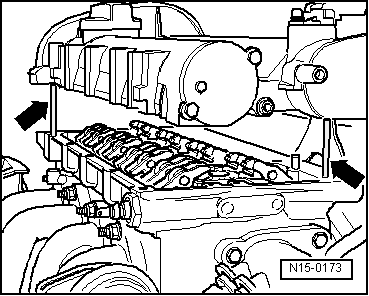| l
| The pistons must not be positioned at TDC. |
| l
| The crankshaft sprocket must be locked to the crankshaft with a bolt and two washers. |
| l
| The camshaft sprockets, locked in the housing with tool -T10016- and secured against involuntary turning. |

Note! | On turning the camshafts, the valves can hit the pistons if they are at TDC. |
| –
| Remove sealant remnants on cylinder head and camshaft housing with a commercially available flat scraper or commercial sealer remover. |
| –
| Prevent dirt and sealant remnants from entering cylinder head. |
| –
| Contact surfaces must be kept free from oil and grease. |
|
|
|
 Note!
Note! Note!
Note!

 Note!
Note!
 Note!
Note! Note!
Note!

 Note!
Note!